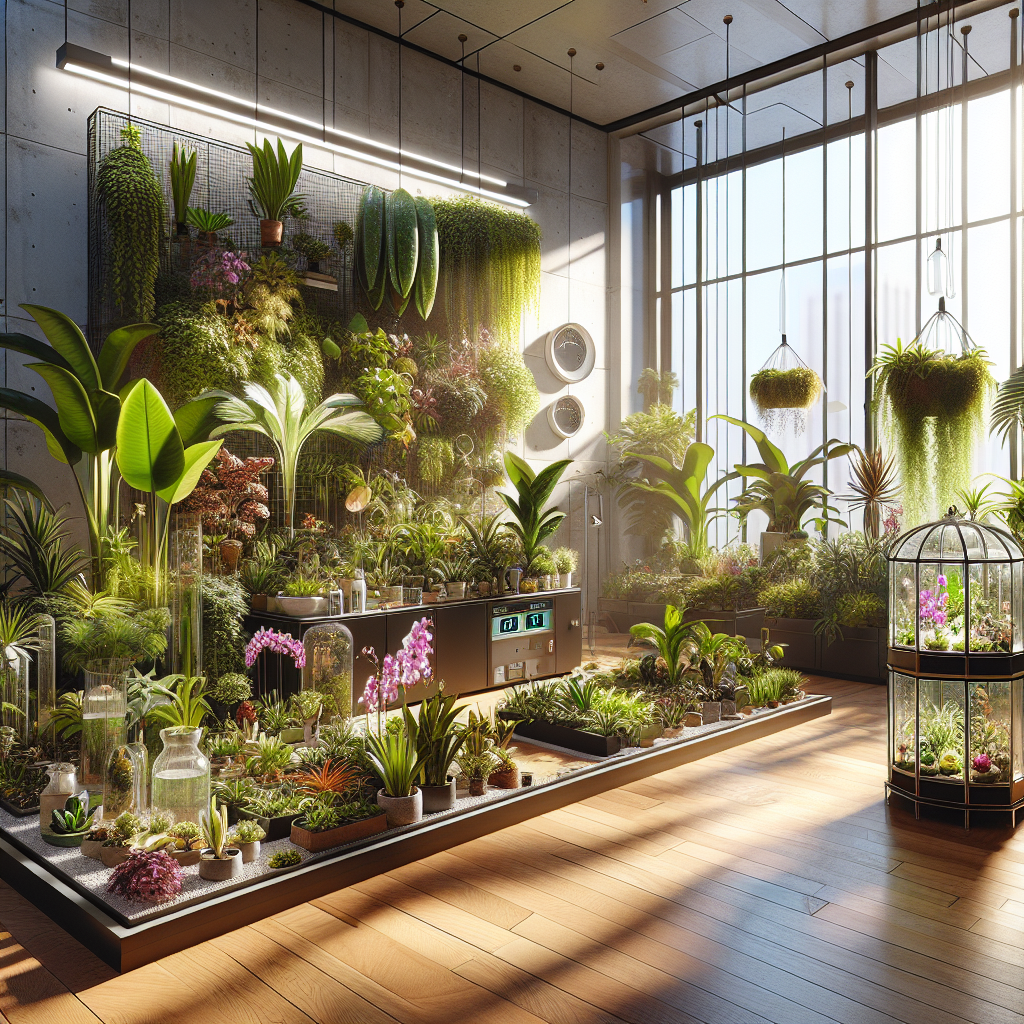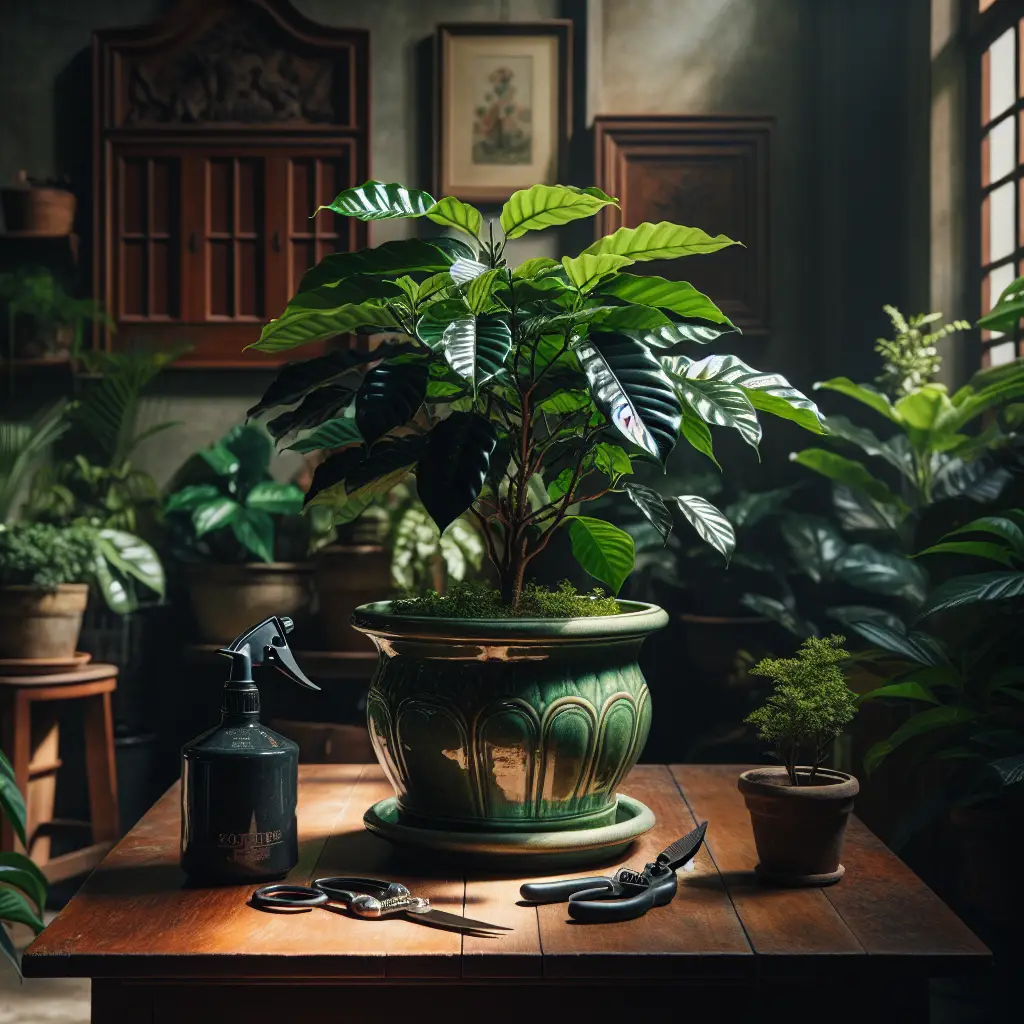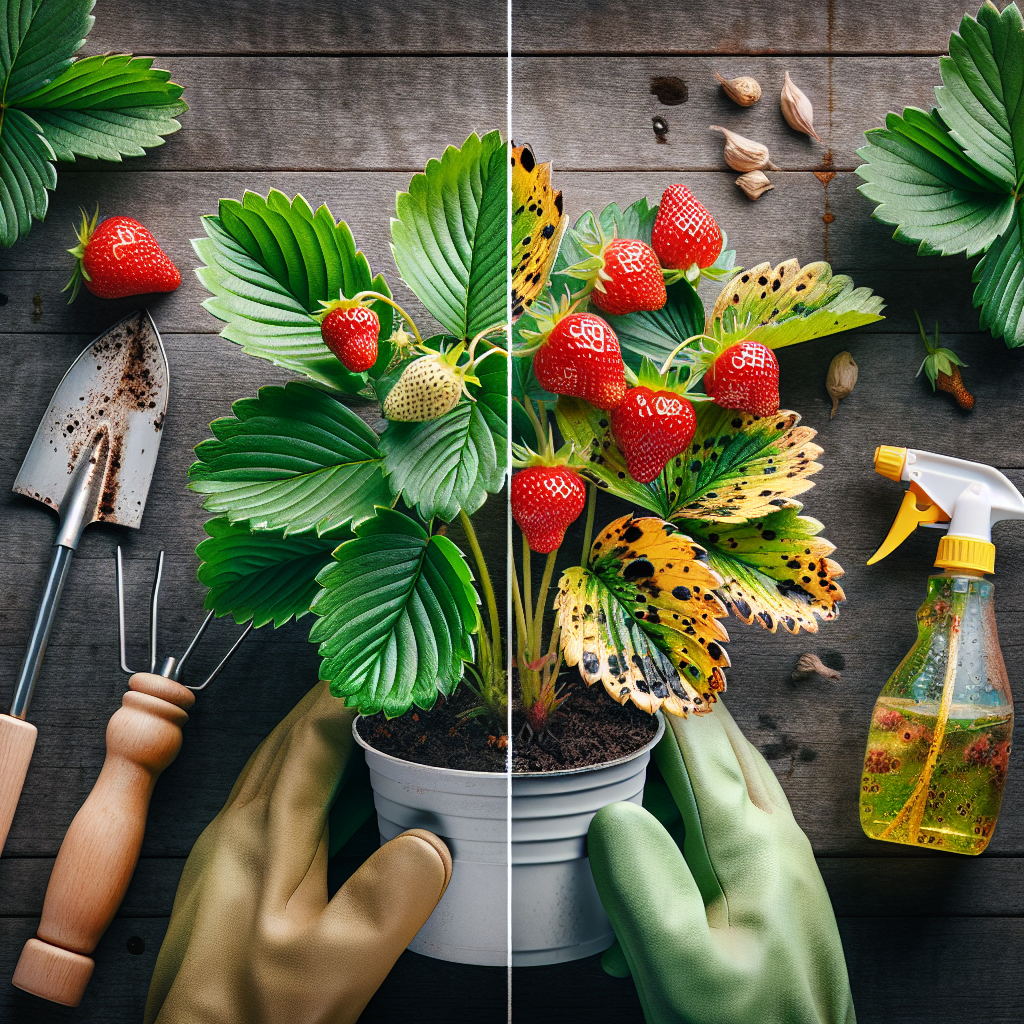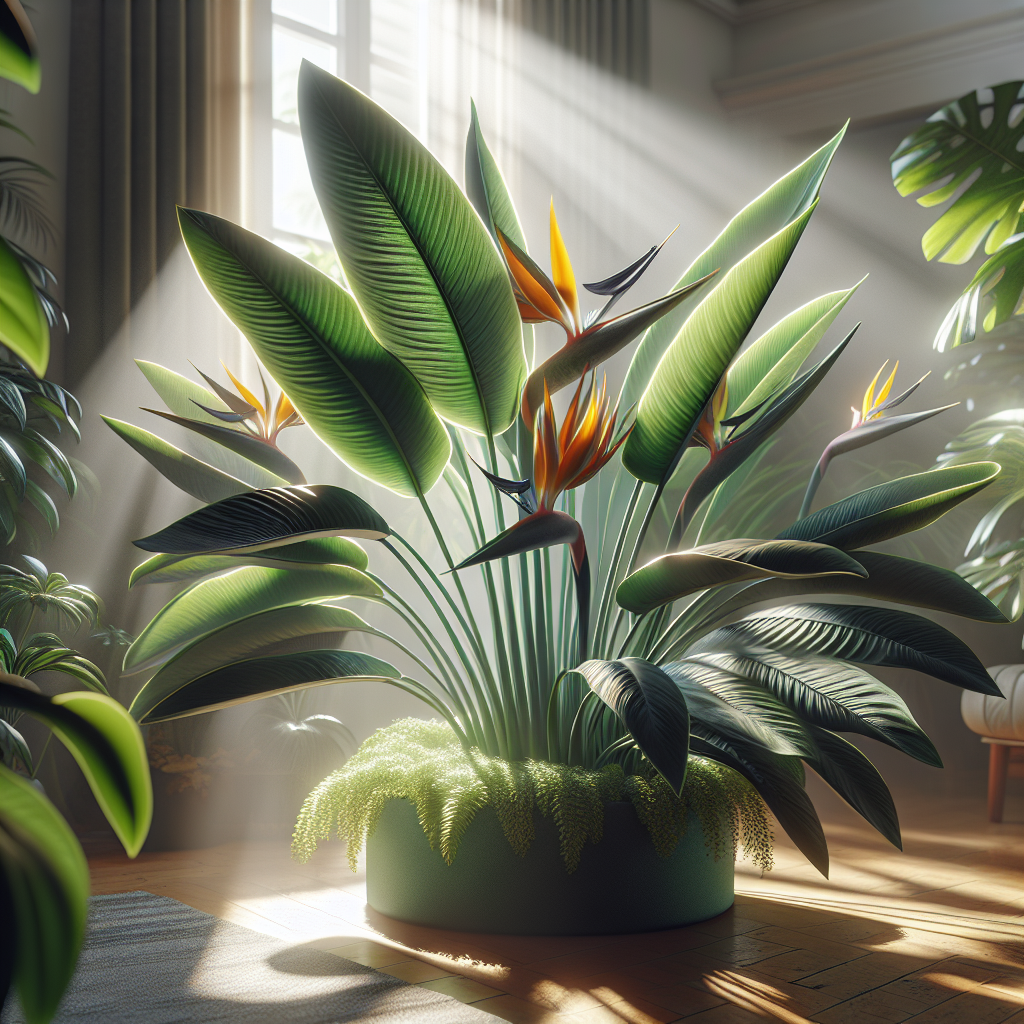Advanced Techniques in Indoor Plant Care
Updated June 29, 2024 at 11:21 am

Optimizing Your Indoor Environment for Plant Growth
Indoor plants can transform a room, adding a splash of color and a breath of fresh air. However, keeping them thriving requires more than just occasional watering. Let’s delve into the specifics of creating the perfect indoor environment for your leafy friends.
-
Pet Friendly:
If you have furry companions, it’s important to choose plants that are non-toxic to animals. Keep your pets safe by opting for spider plants or Boston ferns, which are renowned for their pet-friendly status.
Light Requirements:
Understanding the light needs of your indoor plants is crucial. While plants like the ZZ plant are tolerant of low light, others, such as the Fiddle Leaf Fig, bask in bright, indirect sunlight.
Watering:
Overwatering is a common mistake among new plant owners. A moisture meter can help tailor your watering schedule. For instance, succulents require minimal watering compared to thirstier species like the peace lily.
Humidity:
Tropical plants, such as orchids, flourish in humid environments. Use a humidifier or mist your plants regularly to maintain the moisture they crave.
Temperature:
Most indoor plants prefer a consistent temperature between 65-75°F (18-24°C). Sudden temperature changes can be harmful, so keep plants away from drafts and heat sources.
Difficulty:
Some plants demand more attention than others. If you’re a novice, starting with hardy varieties like snake plants or pothos can ease you into the plant parent lifestyle.
Understanding Fertilization for Indoor Plants
Plants, just like any living thing, require food to thrive. Fertilization isn’t just about adding nutrients; it’s about when and how you do it. Slow-release fertilizers are a convenient way to ensure your plants are consistently nourished over time. A popular choice among many plant enthusiasts is Osmocote Smart-Release Plant Food. It has a no-burn pledge, which is reassuring, especially for beginners. Based on collective feedback, it’s clear that users appreciate the simplicity of application and the visible improvement in their plant’s growth.
- Easy to use with a once-off application
- Balanced nutrition supports robust growth
- No-burn formula reduces risk of over-fertilization
Cons:
- Not organic, which might be a concern for some users
- May not be suitable for all plant types
Find This and More on Amazon
Choosing the Right Soil Mix for Your Indoor Plants
Soil is more than just dirt. It’s a living, breathing foundation for your plants. A quality potting mix can make all the difference, providing the perfect balance of aeration, drainage, and nutrients. FoxFarm Ocean Forest Potting Soil is an example that comes highly recommended for its rich composition and pH adjusted mix, designed to cater to a wide variety of indoor plants. It’s often praised for its consistency and ready-to-use convenience.
- Good drainage and aeration
- pH adjusted for optimal plant health
- Enriched with natural fertilizers
Cons:
- Premium price point
- May attract gnats if not properly maintained
Find This and More on Amazon
Proper Pruning and Maintenance
Pruning isn’t just about keeping your plants looking their best; it’s also vital for their health and vitality. Regularly trimming dead or yellowing leaves can prevent the spread of disease and encourage new growth. A pair of Fiskars Micro-Tip Pruning Snips can be your best friend for this task. These pruners are known for their precision and ease of use, especially in tight spaces within foliage.
- Precision-tip blades allow for meticulous cutting
- Easy to handle and operate with a spring-action design
- Rust-resistant coating ensures durability
Cons:
- Blades may need frequent sharpening with heavy use
- Not suitable for cutting thick branches
Find This and More on Amazon
Monitoring Plant Health and Preventing Diseases
Keeping an eye out for signs of distress is critical to preventing diseases in your indoor garden. Sometimes, despite your best efforts, you might notice symptoms like stunted growth or discolored leaves. Neem oil, such as Garden Safe’s Neem Oil Extract, is a natural remedy prized for its effectiveness against a wide range of plant pests and diseases. It’s revered as an all-in-one solution for organic gardening.
- Organic and safe to use on all plants
- Effective against various pests and fungal diseases
- Can be used as a preventative measure
Cons:
- Strong smell that some people may find unpleasant
- May require frequent application for severe infestations
Find This and More on Amazon
Maximizing Growth with Proper Pot Selection
The right pot is not just about aesthetics; it’s instrumental in the health and growth of your indoor plants. Proper drainage is essential to prevent root rot, and choosing a pot that’s the right size can promote a healthy root system. For instance, crescent gardeners often rave about the Delano Planter for its sleek design, durability, and self-watering feature, making it an excellent choice for busy plant owners who want style and function.
- Modern design complements a variety of decor
- Self-watering system simplifies plant care
- Sturdy and weather-resistant for longevity
Cons:
- Premium pricing might not suit all budgets
- Limited size options might not accommodate larger plants
Is Extra Lighting Necessary for My Indoor Plants?
Depending on natural light availability in your home, you might need artificial lighting to support your plants. Grow lights, such as the Sansi LED Grow Light Bulb, are a stellar choice for providing full spectrum light to indoor plants. Users often highlight how these bulbs have rejuvenated their plants during the darker months or in rooms that lack sufficient natural light.
- Full spectrum light mimics natural sunlight
- Energy efficient and long-lasting
- Easy to install in standard light fixtures
Cons:
- Light may be too intense for sensitive plants if placed too close
- Higher initial cost compared to regular bulbs
Find This and More on Amazon
Watering Wisdom: Techniques for Hydration Without Overflow
Watering your plants is both an art and a science. Too little water and your plants can dry out; too much, and you risk root rot. Self-watering planters or tools like the Aquasolo Watering Cone can help you achieve the perfect balance. It regulates water flow to your plants, whether you’re home or away. Those who’ve incorporated this nifty gadget into their plant care routine often appreciate its simplicity and the peace of mind it brings.
- Regulated watering reduces the risk of overwatering
- Ideal for busy individuals or frequent travelers
- Simple setup using a standard water bottle
Cons:
- Requires a compatible bottle size
- Manual refilling may be required for thirsty plants or hot climates
Repotting Routines: Ensuring Your Plants Have Room to Grow
As your indoor plants grow, they may become root-bound, meaning their roots have filled up the pot, leaving no room to grow further. This can stunt their growth and make watering efficiency difficult. Repotting is a necessary part of plant care, typically required every 1-2 years. By selecting a new pot that is just a few inches larger, you provide your plants with the space they need to continue flourishing. The process is also an ideal time to refresh the potting mix and check the root health.
Meeting Special Requirements: Orchids, Succulents, and Air Plants
Each plant species has its own unique requirements. Orchids, for example, thrive with special orchid potting mixes and regular misting. Succulents prefer well-draining soil and plenty of sunlight, whereas air plants just need a good soaking once a week and bright, indirect light. Catering to these specific needs will ensure each of your plants can thrive in an indoor setting.
Advanced Techniques: Hydroponics and Propagation
Venturing into the world of hydroponics means soilless growth, where all nutrients are delivered through water. This can be a fun experiment for any plant enthusiast and might also help you multiply your plant collection through propagation. Cloning gels, such as Clonex Rooting Gel, are designed to promote root growth when propagating from cuttings, a method that’s both efficient and cost-effective.
- Helps cuttings establish roots quickly
- Seals the cut area to protect against infection
- Can be used for a variety of plant species
Cons:
- Some may find liquid options messier than powder forms
- It’s a chemical, so safe handling is necessary
Environmental Control: Managing Light and Temperature
Capturing the essence of the perfect climate for indoor plants might often seem daunting, but with a few smart choices, it can be quite manageable. It’s not just about quantity but also the quality of light. An ideal choice for managing the intensity and duration of light is the use of smart plugs and timers, like the Wemo Mini Smart Plug. Pairing this device with your grow lights allows you to simulate natural daylight cycles easily. Reviews often commend its ease of use and functionality with home automation systems.
- Ability to schedule lights or fans to turn on and off automatically
- Integration with smart home assistants
- Compact size that doesn’t block other outlets
Cons:
- Requires a stable Wi-Fi connection
- Some users report issues with setup and connectivity
Find This and More on Amazon
Creating a Micro-Ecosystem with Terrariums
A terrarium is not only a decorative item but also a miniature ecosystem for your plants. If you’re interested in closed terrariums, the Mkono Terrarium is often suggested. It comes in various shapes and sizes, perfect for creating a self-sustaining environment for moisture-loving plants. They’re typically celebrated for bringing a touch of green elegance to any space.
- Creates a humid microclimate ideal for certain plant species
- Stylish and versatile in design
- Can be opened or closed to adjust to environmental needs
Cons:
- Glass construction requires careful handling
- May require monitoring to prevent mold growth in certain climates
Plant Nutrition: Understanding Micronutrients and pH Levels
Nutrition goes beyond the basic NPK (nitrogen, phosphorus, and potassium) macro-nutrients. Your plants also need micronutrients, like magnesium and iron, which are often overlooked. Testing your soil’s pH is equally important as it can significantly affect nutrient availability. A highly recommended tool is the Apera Instruments pH20 Waterproof pH Tester. It’s praised for its accuracy and durability, making it an invaluable asset for ensuring your plants receive proper nutrition.
- Waterproof and durable
- Easy to calibrate with clear instructions
- Provides quick and accurate pH readings
Cons:
- More expensive than test strips or litmus paper
- Requires maintenance and occasional recalibration
Choosing Functional Decor: Supporting Plant Health with Style
Who says plant care cannot merge with home decor? Function can meet form with stylish items that boost plant health. For instance, consider a decorative plant stand, like the Bamboo 3-Tier Plant Stand from Olly & Olive. It not only elevates your plants to catch more light but also adds a modern twist to any indoor space. The bamboo construction is robust and eco-friendly, often making it a hit amongst sustainably-minded individuals.
- Eco-friendly material
- Stylish design that fits numerous decor themes
- Helps maximize space for your indoor garden
Cons:
- Assembly required
- May not hold very heavy pots
Engaging with the Plant Community: Learning and Sharing Tips
Finally, one of the lesser-acknowledged yet invaluable techniques for indoor plant care is engaging with the community. Whether that’s joining a local club or participating online, communities can offer a wealth of knowledge. Platforms like the smartphone app Planta receive positive mentions for their functionality in tracking plant care and offering advice. Its reminder system is cited as particularly helpful for those juggling busy lives with the desire to nurture their plants.
- Provides personalized care schedule
- Community and expert advice available
- Useful plant identification feature
Cons:
- Premium features require a subscription
- Database might not include all plant species
There you have it, a selection of advanced tips for indoor plant care that could help you level up your green thumb game. From the right potting soil to the creation of a tailor-made environment, each tip and product is designed to support and foster the growth of your indoor plants. Remember, the journey of plant parenthood is a continuous learning process, and there is joy in every step, from watching the first sprout to managing a lush indoor oasis. Enjoy the process, keep learning, and your plants will thank you in their own leafy ways.
Shop more on Amazon

